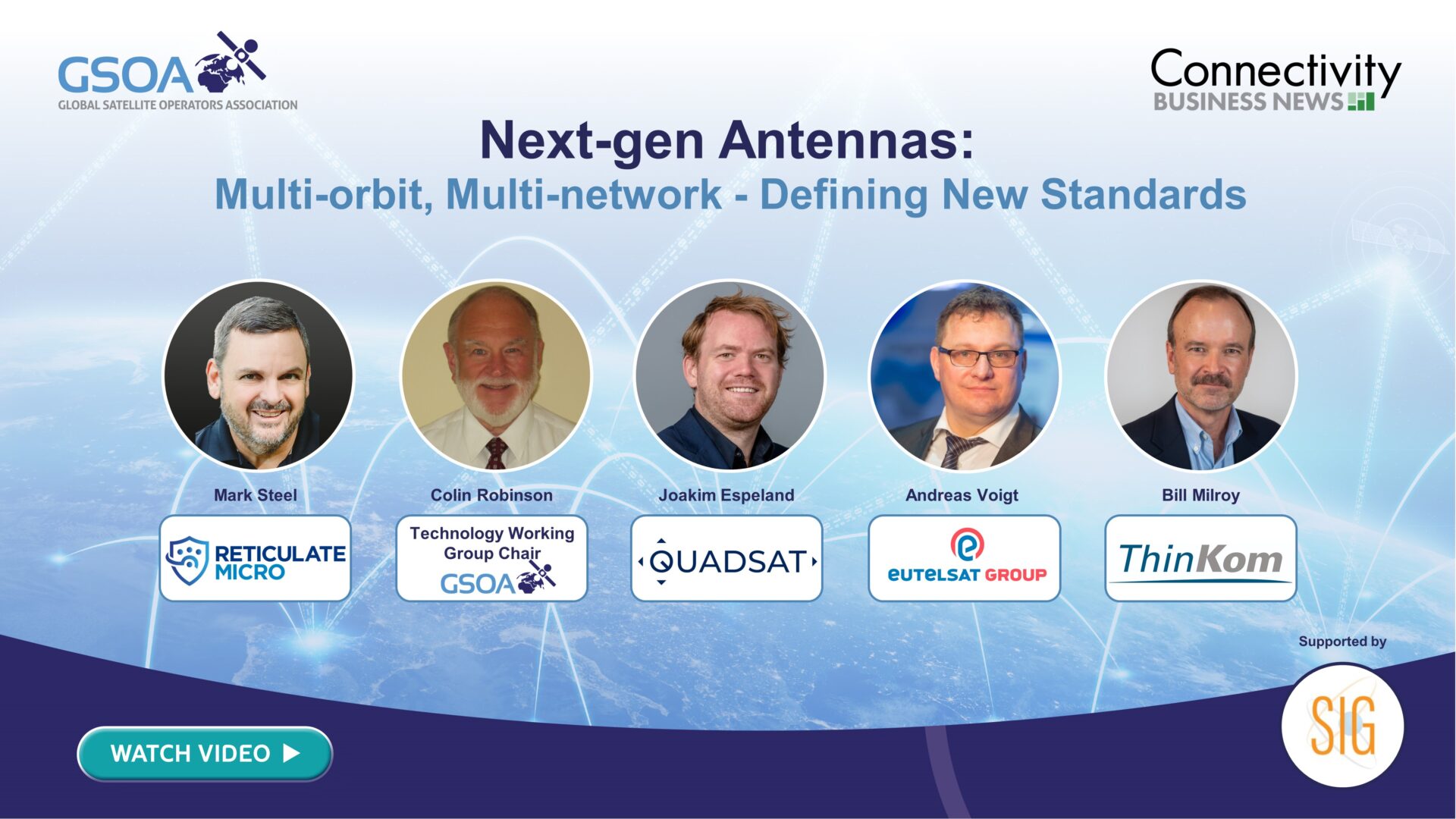Next-gen Antennas: Multi-orbit, Multi-network – Defining New Standards

The conversation built upon the thought-provoking roundtable discussion organised by SIG and GSOA at SATELLITE 2024, focusing on the future of Flat Panel Antennas (FPAs). There was a shared view among participants that FPAs are pivotal for next-generation satellite communications, enabling multi-orbit, multi-network capabilities. However, the lack of standardised testing and approval processes emerged as a significant barrier to widespread adoption.
It was emphasised that standardising FPA requirements and performance is crucial to drive innovation and adoption forward. The digital twin concept was highlighted as a promising solution to streamline testing processes, offering efficiencies and accuracy in assessment.
A representative from a satellite operator company expressed their concern about preventing interference between different orbits and networks while maximizing bandwidth efficiency. They acknowledged the potential of software solutions to optimise FPA performance in achieving these objectives. Furthermore, the view was that regulatory bodies like the ITU and FCC need updates to rules tailored for parabolic antennas to accommodate new antenna technologies.
Collaboration emerged as a key theme, with stakeholders emphasising the importance of cooperation among operators, manufacturers, and testing organisations in developing consensus standards. Initiatives like SOMAP were highlighted as examples of collaborative efforts already underway. Overall, there was a consensus that standardised testing, software optimisation, regulatory updates, and collaboration are essential elements in fully realising the potential of FPAs in satellite communications.
